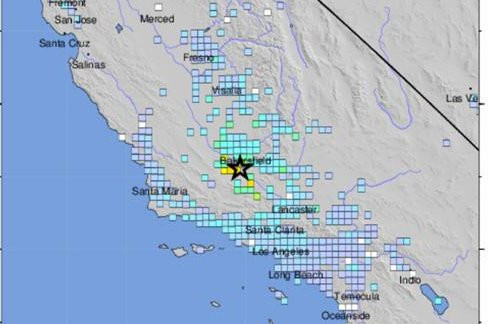A magnitude 5.2 earthquake struck southern California near Bakersfield on Tuesday night, shaking a broad swath of the region and prompting the Los Angeles Fire Department to activate its "earthquake mode." The tremor, which occurred around 9 p.m. PDT, originated at a depth of six miles, approximately 19 miles south of Bakersfield and 89 miles north of downtown Los Angeles, according to the U.S. Geological Survey (USGS).
Despite the quake's strength, the USGS reported that the affected area had a low population exposure, minimizing the risk of significant damage or casualties. The Los Angeles Fire Department confirmed there were no reports of major infrastructure damage or injuries within the city. "No significant infrastructure damage or injuries have been noted within the City of Los Angeles," the department stated, as reported by KTLA-TV.
The earthquake was felt by residents across southern California, from Camarillo to Hollywood, and as far south as Temecula. Areas such as North Hollywood, Pasadena, Simi Valley, Santa Clarita, Santa Monica, Ventura, and Woodland Hills also reported feeling the tremors.
The Caltech Seismological Laboratory noted that the earthquake was followed by 31 aftershocks, with magnitudes up to 4.5. Seismologist Lucy Jones told CBS News that while the aftershocks were typical for a quake of this magnitude, the location was noteworthy. The region had not experienced a significant earthquake since a magnitude 7.5 quake in 1952. "It does not appear to be on the same fault as that earthquake," Jones said, adding that the recent tremor "doesn't look like it is associated with any known fault."
The initial USGS report rated the earthquake at a magnitude of 5.3, but it was later downgraded to 5.2. The quake's epicenter was near Lamont, approximately 15 miles southwest of the town and roughly 25 miles south of Bakersfield. People from Fresno to Temecula reported feeling the quake.
Despite the lack of significant damage, Jones emphasized the importance of preparedness, noting that while small earthquakes do not reduce the likelihood of larger ones, they should serve as a reminder to stay vigilant. "One of the myths is that small earthquakes release energy and make a big earthquake less likely, and that is not true," Jones explained. "In the long run, California is earthquake country. And in the long run, we should expect more earthquakes than we've been seeing for the last 20 years."
Jones highlighted the need for residents to prepare for potential earthquakes by identifying hazards in their homes, creating emergency plans, and considering insurance coverage. "The chance of a big earthquake is 100%. Just give us enough time," she warned.
The Earthquake Country Alliance recommends several preparedness steps for residents in earthquake-prone areas. These include securing heavy items that could fall, creating an emergency supply kit, developing a family communication plan, and participating in community drills and training programs.






